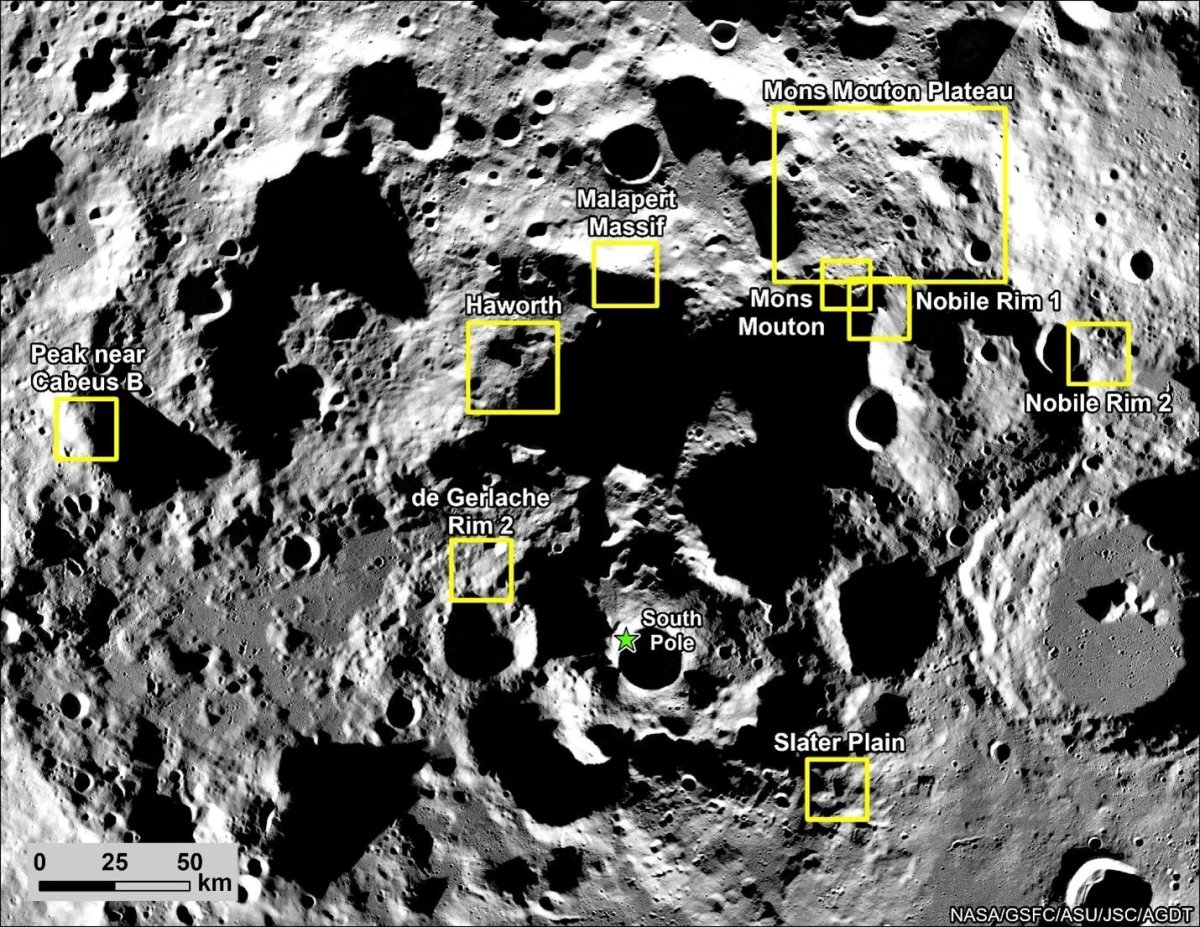NASA has unveiled nine potential landing regions near the moon's South Pole for the Artemis III mission, marking the first crewed lunar landing in over 50 years. This groundbreaking endeavor comes as humanity prepares to explore parts of the moon that have remained uncharted by human exploration. These regions will go through extensive scientific and engineering evaluations to ensure their suitability for this historic mission.
Set to launch as part of NASA's Artemis program, the Artemis III mission aims to lay the groundwork for sustainable lunar exploration. The selected regions reflect a strategic departure from previous lunar landing sites, unlocking new scientific opportunities in areas with unique geological features, permanently shadowed zones, and potentially preserved lunar resources, such as water. Such resources could provide critical insights into the moon's history and our own origins.
According to Lakiesha Hawkins, assistant deputy associate administrator of the Moon to Mars Program Office, "Artemis will return humanity to the moon and visit unexplored areas." She emphasized NASA's dedication to ensuring crew safety as they navigate these new regions, where they will contribute to significant scientific discoveries and learn to live on the lunar surface.

Artemis III Launch Timeline and Expectations
The Artemis III mission is projected to launch no earlier than September 2026, according to NASA. The mission's duration is anticipated to be around 30 days, during which two astronauts will spend approximately a week near the South Pole of the moon. This area is characterized by ancient terrain and cold, shadowed regions where water and other compounds could exist.
Sarah Noble, the Artemis lunar science lead at NASA headquarters, highlighted that the moon's South Pole presents a vastly different environment compared to where the Apollo missions landed. "It offers access to some of the moon's oldest terrain, as well as cold, shadowed regions that may contain water and other compounds," she stated. These landing regions are expected to provide opportunities for groundbreaking scientific research and discoveries.
NASA's Cross Agency Site Selection Analysis team has meticulously collaborated with scientific and industry partners to refine the list of landing candidates. This analysis considered various factors, including scientific potential, launch windows, terrain suitability, communication with Earth, and lighting conditions to ensure successful missions.
Future Missions and Exploration
Before the Artemis III crew lands on the moon, the Artemis II mission is scheduled to launch no earlier than September 2025. This mission will involve a crew of four astronauts who will embark on a 10-day flight around the moon to demonstrate critical capabilities needed for deep-space missions.
The selected crew for Artemis II includes Christina Koch, Victor Glover, Reid Wiseman, and Canadian Space Agency Astronaut Jeremy Hansen. Their journey will serve as a precursor to Artemis III, paving the way for future explorations and advancements in lunar science.
Moreover, the complexity of selecting optimal landing sites for Artemis III is not to be underestimated. As Jacob Bleacher, NASA's chief exploration scientist, noted, "Finding the right locations for this historic moment begins with identifying safe places for this first landing and then trying to match that with opportunities for science from this new place on the moon."
NASA will continue to survey the South Pole for future missions, with plans to expand their knowledge beyond the initial nine regions as the Artemis program progresses.
Do you have a tip on a science story that Newsweek should be covering? Do you have a question about the Artemis missions? Let us know via science@newsweek.com.
Project 2025: Analyzing Risks For The Disabled Community Under Trump
Overcoming Age Barriers: A Personal Journey With The U.S. Air Force Application
Meghan McCain Predicts Kamala Harris's Victory In November


